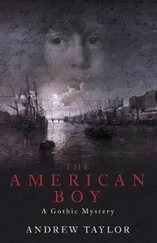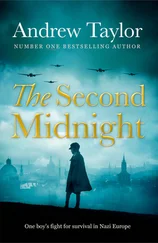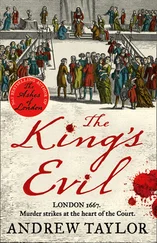At the same time, the university boasted some of the finest teachers in Europe, who were making discoveries of their own while avoiding any direct confrontation with the authorities or the Inquisition. Erasmus had been a professor there, helping to found the Collegium Trilingue for the study of Hebrew, Latin, and Greek, and Adrian of Utrecht, one of the tutors of the young Charles V, had held the chair of philosophy, theology, and canon law before being elected pope in 1522. 4The renowned mathematician, astronomer, and physician Gemma Frisius, who taught Mercator about the movement of the planets and helped him as he grappled with classical geometry, was no backward-looking medieval scholar.
Gemma was a sallow, thin-faced, lame, and asthmatic genius, who had taken his name from the windswept plains of Friesland where he came from, alongside the sandbanks and marshes of the Waddenzee. Like Mercator, he came from a poor family, and his parents had died during his childhood. Though only four years older than Mercator, by the time the latter arrived at Leuven, Gemma had already established a reputation across Europe as the leading mathematician and cosmographer of the Low Countries. A contemporary engraving shows him in his academic robe and bonnet, his long face impassive, with sunken cheeks and a slightly hooked nose. His eyes stare fixedly, challengingly from the frame, and his bony fingers, wrapped casually around a globe, are heavily ringed like a nobleman’s – a picture of a man beyond riches, a scholar literally holding the world in the palm of his hand. While still a student and barely out of his teens, he had produced his own corrected edition of the Cosmographia published five years earlier by the German scholar and sometime tutor of Charles V, Petrus Apianus. The book drew on traditional ancient sources but also, through Martin Waldseemüller’s world map of 1507 and the writings of other German scholars, on the transatlantic voyages of Amerigo Vespucci and the explorers of the previous forty years. The new edition had Gemma’s name on the title page alongside that of its author and was widely accepted as the most authoritative account of the known geography of the world, appearing in some thirty different editions over the next eighty years.
Gemma’s own writings on astronomy and cosmography, De principiis astronomiae et cosmographiae , were published in 1530, the same year that Mercator joined the university. He was working on the practical application of mathematics to surveying and mapmaking, while at the same time following his medical studies, which would lead eventually to his appointment to the university’s medical faculty. He was a role model for the young Mercator, not just a scholar and polymath but a man who combined ancient learning with the most up-to-date research. Gemma was dedicated in particular to the practical application of his studies, the union of mathematics and geography. He had already started to produce the mathematical and scientific instruments for which he would become famous, and he was putting the finishing touches on his new technique of triangulation, the art of defining the location of a place by taking two separate sightings. His planimetrum, a flat wooden disk marked in degrees and fitted with a revolving pointer, could be aligned with magnetic north so that its user could take sightings of different towns across the flat Low Countries. The cathedral at Antwerp, he suggested, was an ideal place to start. First he would settle on a second fixed point nearby and walk the distance between it and the cathedral to check its measurement. Then, using his planimetrum, he would establish the angle between imaginary lines drawn from the cathedral to his observation point and from the observation point to a point of reference, such as a tower, in the distant town. He thus knew the size of one side and two angles of an imaginary triangle drawn between the cathedral, his fixed point, and the distant tower; working out the length of the other two sides, and thus the position of the distant tower, was then a matter of simple geometry. This proved the key to accurate surveying for centuries to come, and a technique which Mercator would master for his own mapmaking.
Gemma Frisius
Science Photo Library, London
Gemma had also found time to tackle the problem of calculating longitude, which had troubled mariners for centuries, and particularly since they had started making long journeys across the Ocean Sea and to the Far East. In theory at least, working out a ship’s latitude was relatively easy – instruments could measure the height of the Sun or other heavenly bodies above the horizon, and sets of tables would give a fairly accurate reading of latitude – but sailors had no accepted way of finding how far east or west they were. Gemma suggested in De principiis astronomiae et cosmographiae that it might be done with a combination of astronomical observations and the use of a reliable clock. Since the Earth was a sphere of 360 degrees that revolved once every twenty-four hours, each fifteen degrees of longitude would make one hour’s difference to the time. First, Gemma advised, the navigator should take an accurate reading of the time and a sighting of the Sun when he set off. If, when he was out at sea, he then marked the time when the Sun was in the same position in the sky, the time difference measured on the clock would tell him how many degrees east or west he had traveled. *“By this art can I find the longitude of regions, although I were a thousand miles out of my attempted course and in an unknown distance,” he declared. 5There were no clocks accurate enough for such a technique – it would be more than two centuries before John Harrison’s chronometer solved that problem – but the theory was impeccable. The technique was simply two hundred years ahead of the technology.
Leuven, from Civitates Orbis Terrarum, 1572
Historic Cities Research Project http://historic-cities.huji.ac.il, The Jewish National and University Library of the Hebrew University of Jerusalem
Despite the hard work of his childhood, Mercator found he lacked basic knowledge in his early days at the university. He struggled at first in Gemma’s lectures on astronomy, he admitted later, because he lacked the mathematical knowledge to grasp the arguments, so he went off alone with his geometry textbooks to follow through the logic of the classical mathematicians.
He started by teaching himself elementary geometry from the books of Gemma’s Friesland countryman Johannes Vögelin, which he said he easily mastered. He then tackled the first six books of Euclid, beginning with the simple, basic definitions – that a line has length but no breadth, for instance, or that a surface has only length and breadth – and gradually building up his understanding of Euclid’s theoretical arguments about lines, points, circles, triangles, and the relationships between them. Mercator’s method was to take a complex geometric proposition and follow it logically, stage by stage, continually referring back to earlier theorems as he went. In Book IV, for instance, he worked painstakingly through Euclid’s seventeen-hundred-year-old instructions for fitting a straight line into a circle, and in Book VI, he followed through the proof that a straight line drawn through a triangle parallel to one side will cut the other two sides in equal proportions. Each proposition built upon the ones before it, so that by the time he had finished, he had mastered the technique of theoretical reasoning to the point where he could follow Gemma’s lectures and understand the principles of triangulation. Mercator shrugged off this minor achievement: “In a few days, I got to the point where there was nothing in the six books that I had not diligently studied and learned,” he wrote later. 6
Читать дальше












